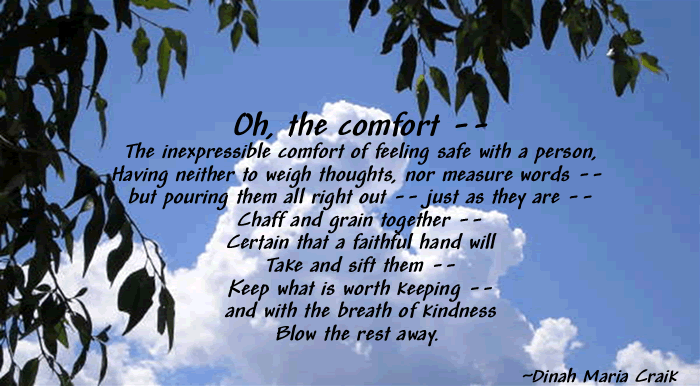Guanyin - China, Northern Song (960-1126) or Tangut Xia (1038-1227) dynasty, first half of the 11th century. This statue of Kuan Yin is an early example of the Boddhisattva (enlightened being) of Compassion. Translated, her name, Kuan Shih Yin, means She-Who-Hearkens-to-the-Cries-of-the-World.
Sitting in the pose of royal ease (maharaja lalitasana), this statue is over six feet tall, and the figure itself, in the standing position, would be truly tall indeed! Such statues were often posed sitting on a rocky outcropping overlooking a body of water such as a lake, or a waterfall, or a pool featuring lotus blossoms.
It is a wondrous experience to sit at the feet of this gentle image, and gaze into its serene face. If you ever have the opportunity to visit the Honolulu Academy of Arts, it is on permanent display and well worth the price of admission.
When I was in grade school, my brother and I used to walk from school to the art museum every afternoon where we would wait for my mother who had art lessons, and then the three of us would go home together. Quite often, I would wander the various galleries and look at all the artwork. The gallery guards were so tolerant of my comings and goings, as long as I was quiet. One of my favorite pastimes was to go and visit the statue you see above here. While this early Guanyin sculpture is described as being male, it is said that the boddhisattva Kuan Yin is venerated in a fashion similar to that of the Virgin Mary in Christian traditions. People find great solace standing before such images.
Recently, I had the opportunity to visit this statue after not having seen him (or her) for years! I found such a profound sense of comfort in gazing at it that I was actually surprised by a flood of tears, and a deep sense of peace.
There are so many stories and legends about this boddhisattva. One tells of a young girl named Miao-Shan.
Once, in 7th century China, there was a king had three daughters, the youngest was named Miao-Shan. At the time of Miao-Shan's birth, the earth trembled and a wonderful fragrance permeated the air. Flower blossoms sprang up around the land.
The king and queen were amazed by this blessing. Unfortunately, they had what I like to call "I trouble" and saw little value in a child who appeared pure and kind.
When Miao-Shan got older, the king wanted to find a husband for her. She told her father she would only marry if by so doing she would be able to help alleviate the suffering of all mankind.
The king became enraged at her attitude. He forced her to slave away at menial tasks. She didn't mind because she believed that no small task was unimportant.
The king then sent her to a monastery and instructed the nuns there to treat her so badly she would change her mind. She was forced to chop wood, carry water, and tend a garden for the kitchen. Since the land was poor, they thought she would give up in defeat. To everyone's amazement, the garden flourished, even in winter. And if that weren't enough, a spring welled up out of nowhere next to the kitchen.
When the king heard about these miracles, he decided that he was going to kill Miao-Shan. When his henchmen arrived at the monastery, a spirit came out of a fog of clouds and carried her away to safety on a remote island. She lived there on her own for many years, pursuing a life of religious dedication.
Several years later, her father became seriously ill. He was unable to sleep or eat; his doctors told him he would die soon.
A wandering monk told the king he could cure the monarch, but he would have to grind up the arms and eyes of one free from hatred in order to make the medicine. He told of a boddhisattva living in the land who would gladly surrender her eyes and arms for the king.
The king sent an envoy to find this unknown bodhisattva. He was led to Miao-Shan and she gladly complied. The medicine was made and the king instantly recovered. The monk told the king he should thank the one who gave her eyes and arms.
The king set out to do just this. When they found her and realized who she was, they cried out. She spoke and said, "Mindful of my father's love I have repaid him with my eyes and arms. With eyes full of tears and hearts of shame, they gathered to hug her.
Clouds formed. The earth trembled, flowers fell from heaven. It is said in that moment she had realized nirvana. She wanted to go back, however, and help those still suffering. So it was she was given a thousand eyes and a thousand arms to see where help was needed and to offer a hand.
Here she is, with all those hands and eyes!
You may be familiar with the mantra Om Mane Padme Hum. Those two middle words refer to the jewel in the lotus. This is the chant of the devotees of Kuan Yin. It is said that the bodhisattva is present wherever there is the fragrance of jasmine or incense. She is there in the presence of a body of water, or a pool of water lilies. Her voice can be heard in the tinkling of chimes, or the soughing of the wind as it blows through a stand of pine trees. And her presence may be felt near a waterfall or a river or a still mountain pool.

|



